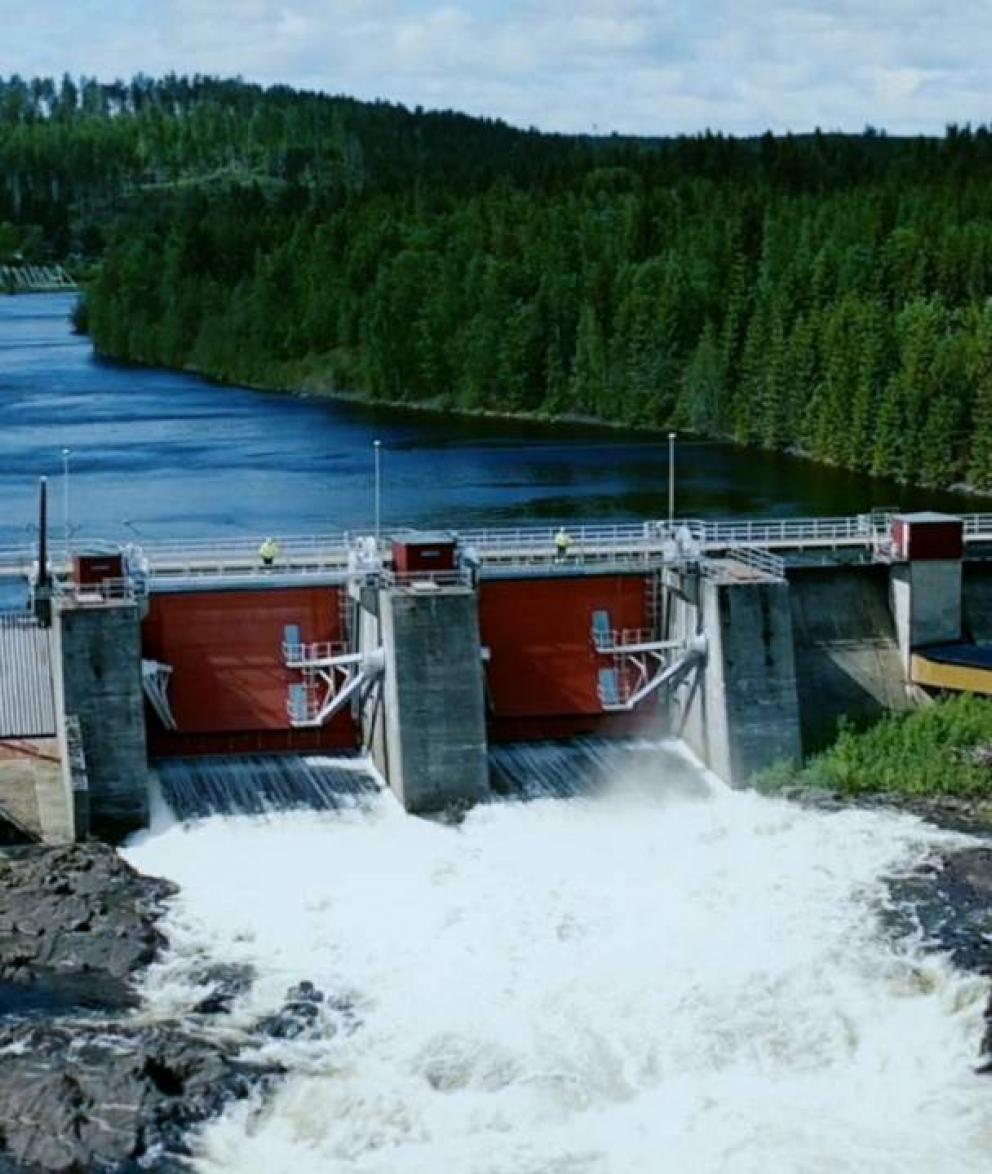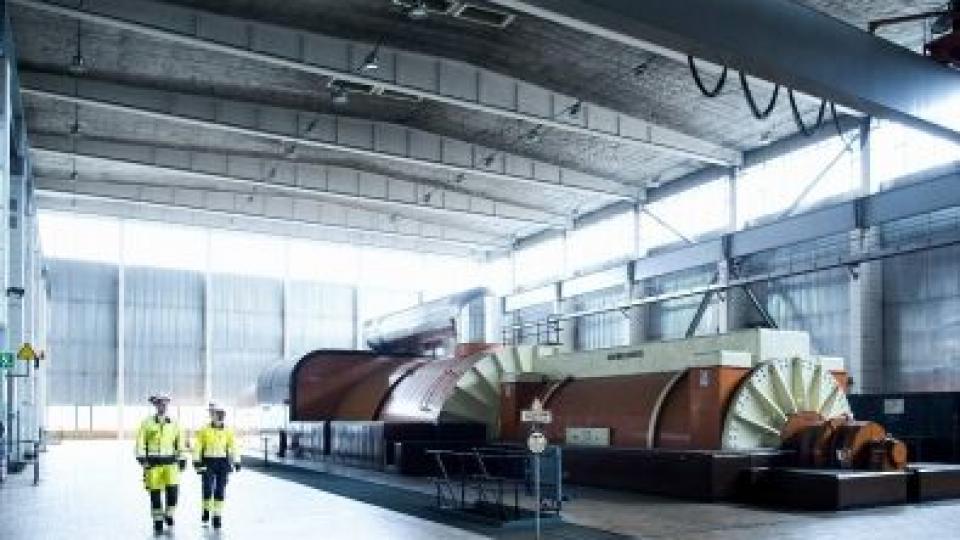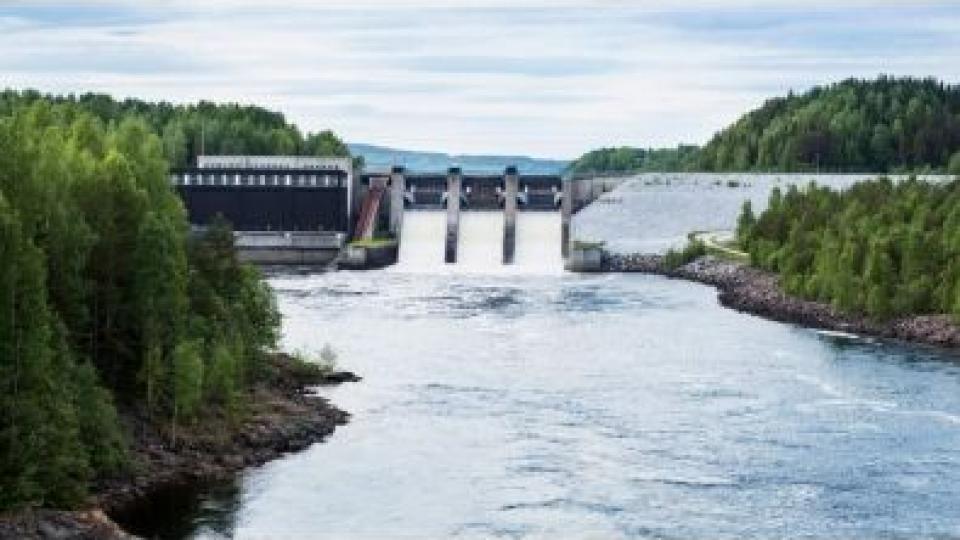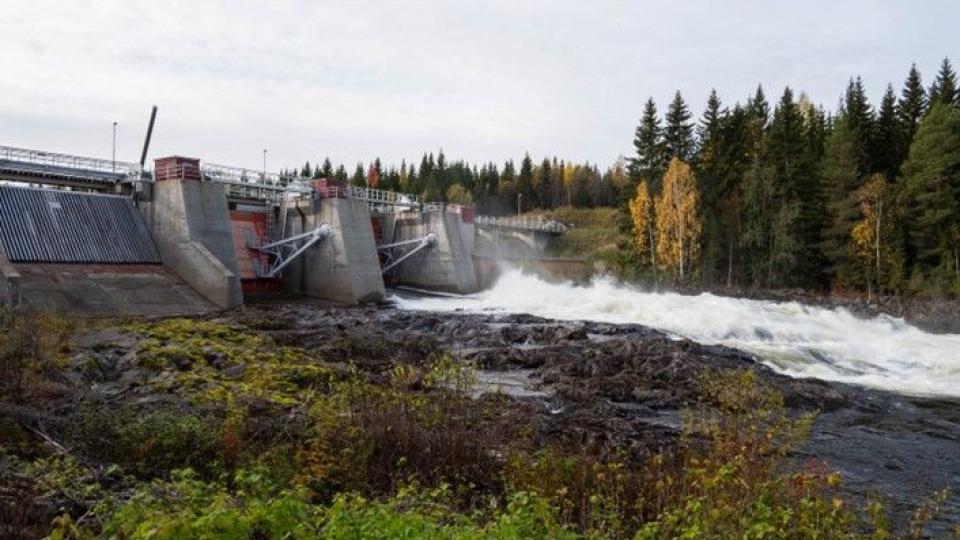Balancing power is required for future development
To prevent Sweden from be affected by power outages, we must produce exactly the right amount of electricity at every moment. This can be compared to a bathtub, where the water level must always be just right. Balancing power is the faucet that regulates the water level and is a prerequisite for the electricity system to function.
Balancing power ensures that we have the electricity we need
Sweden is good at producing electricity. We produce so much that we can sometimes export it to other countries. At the same time, we are also major consumers of electricity. Sweden’s per capita electricity consumption is the sixth highest in the world. Our high demand for electricity is essentially very positive – it is partly due to our large exports of steel, paper and other base-industry products, and in part due to our modern society being built on smart electrical solutions that make our lives easier.
However, this also means that we are dependent on electricity generation working as designed and matching our needs. At present, electricity cannot be stored to any great extent. Instead, we have to produce the exact amount of electricity we need at any given moment. Maintaining the precise balance between supply and demand is not the simplest of feats. Sweden is a country where the weather causes changing preconditions for the generation of and the demand for electricity. Having sufficient electricity to meet our needs, including changes in our demand for electricity, requires two components: stable baseload power and sufficient balancing power to adjust electricity generation as the demand increases.
In Sweden, nuclear power and hydropower form the foundation of the electricity system, what is referred to as the baseload power, and together account for 70–80% of Swedish electricity generation. Balancing power primarily consists of hydropower. As can be deduced from its name, its function is to balance. It is more adaptable than other forms of energy and can be quickly reduced or increased as needed. Balancing power is also crucial to our maintaining a high quality supply of electricity.
Hydropower is the best balancing power
Hydropower might be our smartest energy source. Its advantage is that it can be adjusted on a short- and a long-term basis. Electricity generation from a hydropower plant can be adapted to our needs – when it comes to long-term fluctuations in economic cycles or if the weather should suddenly change and cause a surge in our demand for electricity.
Consequently, hydropower essentially functions as a battery. Thanks to the dams and reservoirs, we can, to some extent, seasonally adapt electricity generation and produce electricity when it is needed most. Furthermore, hydropower is currently Sweden’s largest source of renewable energy. It causes no carbon emissions and accounts for approximately 45% of Swedish electricity generation.
Hydropower utilizes the natural eco cycle of water. Heat from the sun causes water from the ground, lakes, rivers and seas to evaporate and rise. As the air cools at higher altitudes, the evaporated water condenses to form clouds that then lead to precipitation in the form of rain or snow. Most water evaporation occurs in southern Sweden, while the most precipitation occurs in the Scandes mountain range, in the form of snow. The snow melts during spring and drains into the watercourses, and some of this water is collected in the reservoirs of hydropower plants. When needed, the water is used to generate electricity. Once the water has left the turbines, it returns to the rivers and the eco cycle starts all over again. As hydropower is such a natural source it is perhaps unsurprising that we have been utilizing it for so long. Although the potential energy of flowing water has been used for the large-scale electricity generation since the end of the 1800s, we can find the first example of how, as early as the Middle Ages, humans utilized flowing water to perform heavy work in the Nordic countries.
Uniper is the third-largest hydropower producer in Sweden, with 74 wholly and jointly owned hydropower plants. Our hydropower plants located from Lycksele in the North to Kristianstad in the South provide a combined output of approximately 1,700 MW and an annual delivery of about 8,000 GWh of renewable electricity. This corresponds to approximately 12% of Sweden’s total hydropower production, and is equivalent to the annual electricity consumption of 400,000 Swedish houses!
The more solar and wind power we use, the more important balancing power becomes
Sweden’s electricity supply derives from several different types of energy. All forms power generation must work together to prevent the occurrence of power failures. Our demand for electricity is on the rise, as society develops and new electric-powered innovations see the light of day.
The more electricity we need, the more important balancing power becomes. The more wind and solar power is incorporated into the electricity system, the more difficult it becomes to balance electricity generation to meet loads, since we cannot control the weather. This means that the more our electricity generation is derived from renewable sources, the more prominent balancing power becomes.
Did you know that...
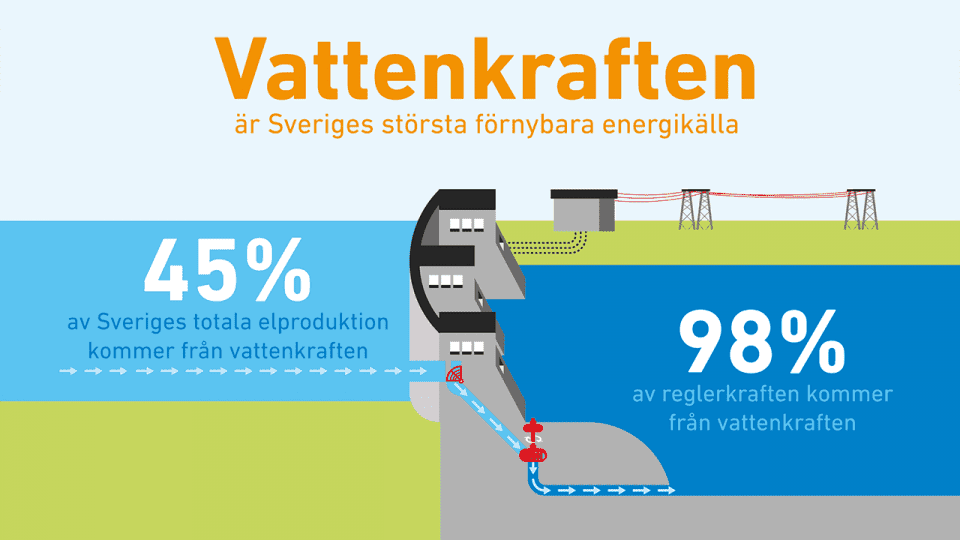

Hydropower – balancing power and baseload power rolled into one
- Hydropower is Sweden’s greatest source of renewable energy. In a normal year, Sweden’s hydropower plants produce approximately 65 TWh of electricity (one terawatt hour = one billion kilowatt hours). This corresponds to approximately 45% of Sweden’s total electricity generation.
- Hydropower accounts for 98.3% of balancing power. The remaining 1.3% comes from planned energy production from small-scale wind power and stored energy.
Find out more
A lifeline in the Swedish electricity system.
Hydropower has many advantages. It has near-zero emissions of greenhouse gases, while providing a reliable electricity supply at a competitive price.
Learn more about the fascinating hydropower, what differentiates a Francis turbine from a Kaplan turbine and what the staff actually do in the operations center.
